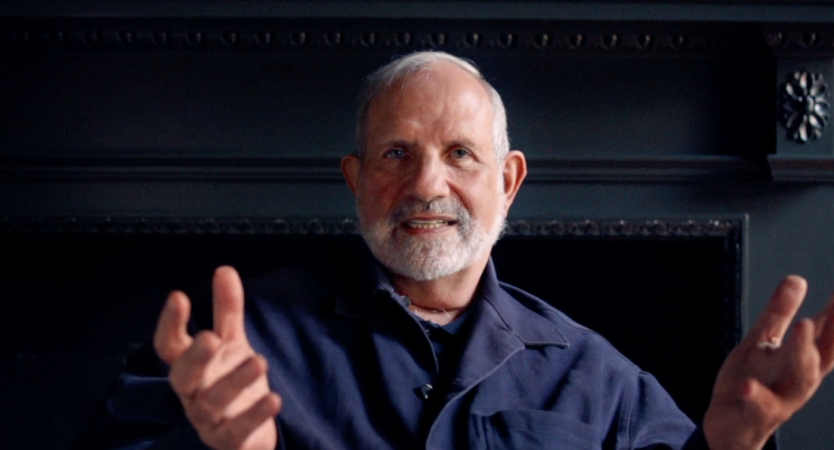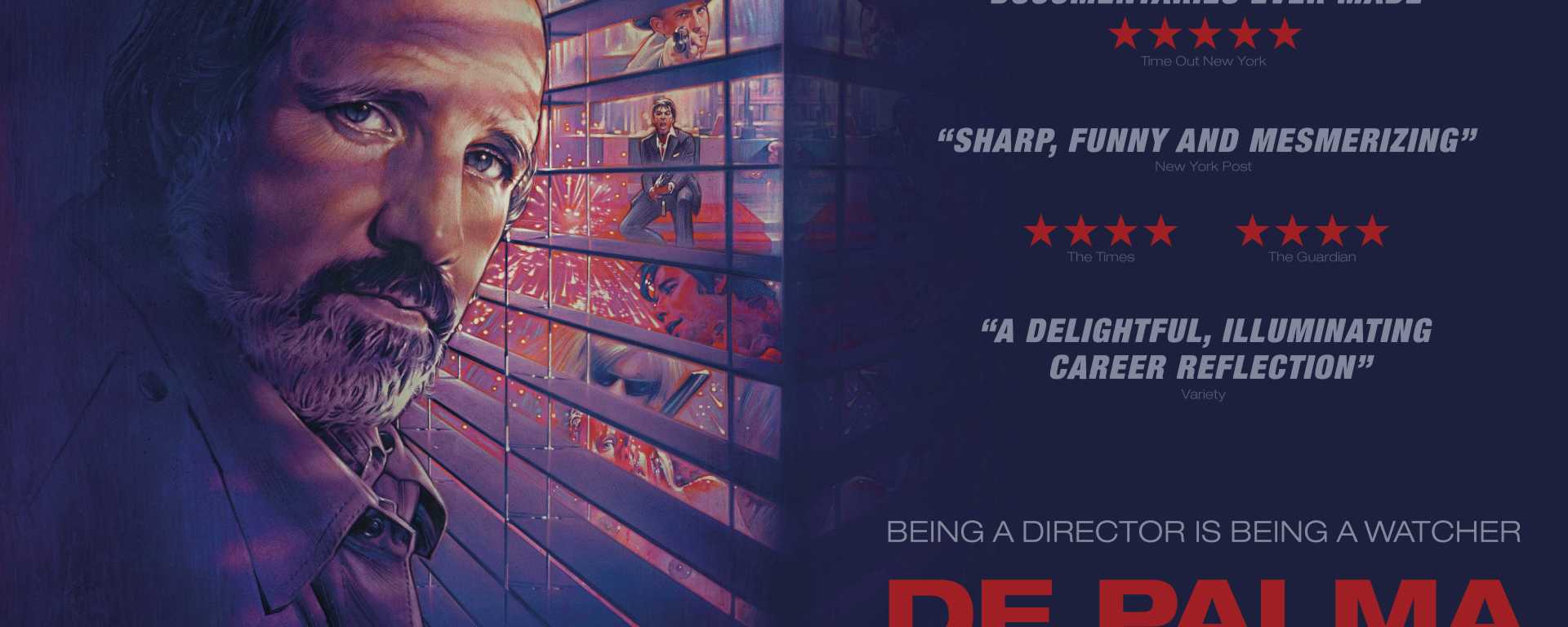An opening image of Alfred Hitchcock’s Vertigo may seem like an odd way to begin a documentary about another filmmaker but that is exactly De Palma begins. A documentary charting the illustrious career of Brian De Palma repeatedly compares him to his idol Hitchcock but shows the great success, innovations, and works of filmmaker and writer in his own right.
In a pure De Palma on De Palma way, the film sits down its subject as he takes us through his career film by film, starting with his childhood and early influences; his education and initial interest in film. Then in a run through from Murder a la Mod, De Palma comments on the experiences of each film with behind the scenes footage and stories alongside, charting the early techniques used, and how he dealt with studios as well as funding. The film then explores psychological thrillers, later crime dramas, action films and finally his last feature Passion.
In a career spanning over forty years, Brian De Palma is most synonymous with his dark psychological thrillers. His adaptation of Stephen King’s Carrie, The Untouchables, and Scarface are all mentioned here but the great director goes into depth about all his works in order.

De Palma’s body of work, despite its varying genres, has a brilliant and distinctive style. A large portion of the film talks about the techniques that give De Palma’s work its visuals. Methods such as split screens and multi-view narratives are demonstrated. His own camera work was used to create complicated and complex shots. Long rolling shots and his use of voyeurism, easily demonstrated in films such as Dressed to Kill and Sisters are also discussed. Yet De Palma is not a filmmaker that sat on his morals. Even in his films that broke away from other works such as Casualties of War, (which was the true account of soldiers abusing a young girl in Vietnam), he found new challenges. Working in extreme heat, as well as with young troublesome actors (Sean Penn,) gave the director one of his most difficult shoots that, sadly, turned into a box office disappointment. Yet the project allowed the filmmaker to express his political stance within his work.
As this is a personal account, De Palma’s private life is also discussed such as his relationships with actresses and his three marriages that ended in divorce. What becomes clear as the film progresses is that his love and dedication to film may have played a hand in the demise of his personal life.
The highs and lows of his career are laid bare in the film. Despite his later films getting good critical receptions, he struggled to gain the audience his films commanded in his youth. This lack of box office success lead to De Palma agreeing to direct the first Mission Impossible film. In what most could agree was an unusual project for De Palma. the Tom Cruise led franchise we a financial high for the filmmaker but not looked back over as a career highlight.

One controversy that has plagued De Palma throughout his career is his treatment and portrayal of women on screen. Women have often been the centre of his films and are more often than not shown in a provocative or violent way. The camera often admires, stalks then demolishes his female subjects. Voyeurism and sexual violence are hugely presents throughout his works but De Palma faces these critisms head on as a man who admires woman and makes films with his own male gaze.
The final few moments of the film are really interesting. De Plama’s greatest influence Hitchcock is present throughout the film. Despite the respect the director accumulated in his lifetime, it is only a handful of films that are widely praised and synonymous with the filmmaker according to De Palma. Hitchcock’s legacy is a clear reflection of De Palma’s own with his later successes not getting the recognition of his earlier works. His name is repeatedly linked to only a handful of his films such as Carrie, Scarface, and The Untouchables. The journey we go upon in the film hits an almost bleak ending seeing De Palma put so much into each of his projects and yet receive so little praise later on. Yet his legacy is still an impressive one and his body of work speaks for its self.
An intimate, honest, and fascinating look at one of America’s greatest filmmakers. Charting the highs and lows of De Palma through his work, life and influences.
De Palma is out in cinemas now.

